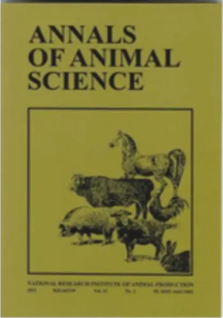Document type : Scientific journal published in Annals of Animal Science
Authors: Piotr Herbut,Gundula Hoffmann, Sabina Angrecka, Dorota Godyń, Frederico Márcio Corrêa Vieira, Krzysztof Adamczyk, Robert Kupczyński
Preview: Heat stress in livestock is a function of macro- and microclimatic factors, their duration and intensity, the environments where they occur and the biological characteristics of the animal. Due to intense metabolic processes, high-producing dairy cows are highly vulnerable to the effects of heat stress. Disturbances in their thermoregulatory capability are reflected by behavioural, physiological and production changes. Expression of thermoregulatory behaviour such as reduction of activity and feed intake, searching for a cooler places or disturbances in reproductive behaviours may be very important indicators of animal welfare. Especially maintain of standing or lying position in dairy cattle may be a valuable marker of the negative environmental impact. Highly mechanized farms with large numbers of animals have the informatic system can detect alterations automatically, while small family farms cannot afford these type of equipments. Therefore, observing and analysing behavioural changes to achieve a greater understanding of heat stress issue may be a key factor for developing the effective strategies to minimize the effects of heat stress in cattle. The aim of this review is to present the state of knowledge, over the last years, regarding behavioural changes in dairy cows (Bos Taurus) exposed to heat stress conditions and discuss some herd management strategies provided mitigation of the overheat consequences.






